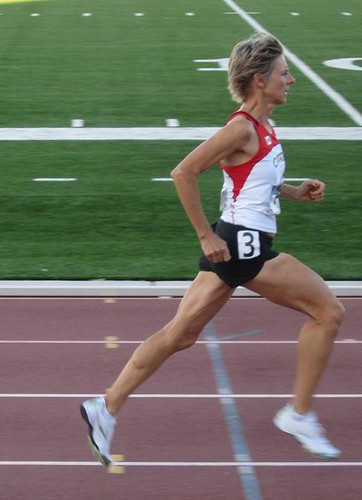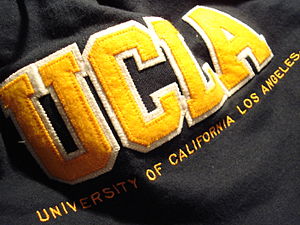 When this double bill was first announced, I had a double-take. It sounded too good to be true. There is no doubt in my mind that Sonny Landreth and Eric Johnson would occupy 2 spots on my own personal Top 10 guitar player list. A double bill would prove to be something akin to guitar heaven – at least in my world.
When this double bill was first announced, I had a double-take. It sounded too good to be true. There is no doubt in my mind that Sonny Landreth and Eric Johnson would occupy 2 spots on my own personal Top 10 guitar player list. A double bill would prove to be something akin to guitar heaven – at least in my world.
Better yet, a double bill in which they both played on the same stage at the same time would be even more incredible. One could only hope for such nirvana.
Last Friday, September 30, I was witness to, well, guitar heaven - or at least the little piece of it that came to the Paramount Theater in Austin.
Both of these guitar players have provided me with some significant memories over the years. They have both been a part of my journey, first to Texas and then in my development as a guitar player. On Friday, they reminded me of what passionate musicianship looks like, sounds like, and feels like – together on the same stage.
 This is the second in a series of RunSmart videos. The series is on-going, with a new video released on a monthly basis. These videos complement the material presented in the book “RunSmart: A Comprehensive Approach To Injury-Free Running”. The full series of videos can be found here. A transcription of the video will also be available with each post.
This is the second in a series of RunSmart videos. The series is on-going, with a new video released on a monthly basis. These videos complement the material presented in the book “RunSmart: A Comprehensive Approach To Injury-Free Running”. The full series of videos can be found here. A transcription of the video will also be available with each post.
For those of you that are interested in a more interactive learning environment, consider attending a four hour RunSmart Level One program. You can further your education with the Level Two and Level Three programs which will focus on the application of RunSmart principles to both coaching and training program development and running injury recovery.
In this video, I will discuss the concept of changing your running form. Should you do so? And why?
I hope you enjoy the video series. If you would like me to address any specific aspect of the RunSmart approach, drop me an email or add a comment to this article.
 It may be hard to believe for some, but the University of Texas Longhorns are now 4 – 0. In some polls, they are even back into the Top 10. We do need to remember that these wins were against Rice, BYU, UCLA, and Iowa State – none of which have looked that spectacular this season.
It may be hard to believe for some, but the University of Texas Longhorns are now 4 – 0. In some polls, they are even back into the Top 10. We do need to remember that these wins were against Rice, BYU, UCLA, and Iowa State – none of which have looked that spectacular this season.
However, the Horns have won 3 games on the road, and that does count. And although they started the season at Rice, they really got the road trip rolling with a big win against UCLA. It was against UCLA last season that the Horns got pounded. What was bad then became worse when they lost to Iowa State at home. And it was all downhill from there, in more ways than one.
Given the way they played last season, a 4 – 0 start is a big change in the right direction. They have already erased some of last year’s humiliating losses with solid victories this season. But there are a lot of games yet to be played, and Oklahoma – the number one team in the country – are lurking right around the corner.
 Evidence-based clinical practice consists of the use of assessment strategies and treatment interventions that have scientific evidence to support their use. The harsh reality is that although there are a myriad of hypothetical constructs underlying many assessment strategies and treatment interventions, many (if not most) of these are not yet supported by both the physiology literature (on the cellular level) and the clinical literature (on the applied level).
Evidence-based clinical practice consists of the use of assessment strategies and treatment interventions that have scientific evidence to support their use. The harsh reality is that although there are a myriad of hypothetical constructs underlying many assessment strategies and treatment interventions, many (if not most) of these are not yet supported by both the physiology literature (on the cellular level) and the clinical literature (on the applied level).
On a daily basis, clinicians are faced with a significant clinical and ethical decision: to utilize evidence-based clinical approaches, or not. Is non-evidence-based practice not only a clinical issue, but a broader ethical issue as well?
 We are the masters of our own destiny. And we oftentimes forget it. You hear it all the time in our daily dialogue, the words we choose when we speak about our world:
We are the masters of our own destiny. And we oftentimes forget it. You hear it all the time in our daily dialogue, the words we choose when we speak about our world:
I am fat. I am slow. I am dumb. I am unlovable. I can’t learn this.
Worse yet, how about the unspoken dialogue that exists when you read between the lines:
I am a self-fulfilling prophecy.
Are we passive victims of our own physical and mental worlds? Must we be transfixed on a life of woe ahead of us? The answer is simple: No.
We can choose to Live A Smart Life, or we can choose to do nothing, or any of a number of options in between. We can choose to remodel our world – and here’s how.
 Another day, another straw poll, another winner. That appears to be the standard media report these days. Fortunately, the world is a wild and wonderful place that leaves people like me with plenty of news to ponder, even in the quietest moments. And yes, I just quoted Supertramp. What is this world coming to?
Another day, another straw poll, another winner. That appears to be the standard media report these days. Fortunately, the world is a wild and wonderful place that leaves people like me with plenty of news to ponder, even in the quietest moments. And yes, I just quoted Supertramp. What is this world coming to?
Without further adieu, onwards to Episode 24, where we will find bread crust, Aggieland, and parallel parking – all in the same report.
 In a previous post, I described the basic principles underlying Recovery-Centered Training (RCT). This new model of human performance is based on the mechanisms of tissue recovery, adaptation, and development. Not only does it focus on optimizing the sport performance capacity of the athlete, but it also serves as a functional basis for injury prevention-based training. A schematic overview can be found below.
In a previous post, I described the basic principles underlying Recovery-Centered Training (RCT). This new model of human performance is based on the mechanisms of tissue recovery, adaptation, and development. Not only does it focus on optimizing the sport performance capacity of the athlete, but it also serves as a functional basis for injury prevention-based training. A schematic overview can be found below.
One of the primary functional elements of Recovery-Centered Training is the mechanical network. This includes all of the tissues and the neuro-musculo-skeletal and cardiovascular systems. In many ways, the cardiovascular system is simply another component of the neuro-musculo-skeletal system. The heart is, in fact, a very specialized muscle that adapts to training stimuli much like other skeletal muscles do. These systems (and the tissues that create these systems) are responsible for the mechanical function of the human body.
 "Running Injuries: Etiology And Recovery- Based Treatment" (co-author Bridget Clark, PT) appears in the third edition and fourth editions of "Clinical Orthopaedic Rehabilitation: A Team Approach" by Charles Giangarra, MD and Robert C. Manske, PT.
"Running Injuries: Etiology And Recovery- Based Treatment" (co-author Bridget Clark, PT) appears in the third edition and fourth editions of "Clinical Orthopaedic Rehabilitation: A Team Approach" by Charles Giangarra, MD and Robert C. Manske, PT.
 Allan Besselink, PT, DPT, Ph.D., Dip.MDT has a unique voice in the world of sports, education, and health care. Read more about Allan here.
Allan Besselink, PT, DPT, Ph.D., Dip.MDT has a unique voice in the world of sports, education, and health care. Read more about Allan here.
 Top 5 finalist in three categories: "Best Overall Blog", "Best PT Blog" and "Best Advocacy Blog".
Top 5 finalist in three categories: "Best Overall Blog", "Best PT Blog" and "Best Advocacy Blog".